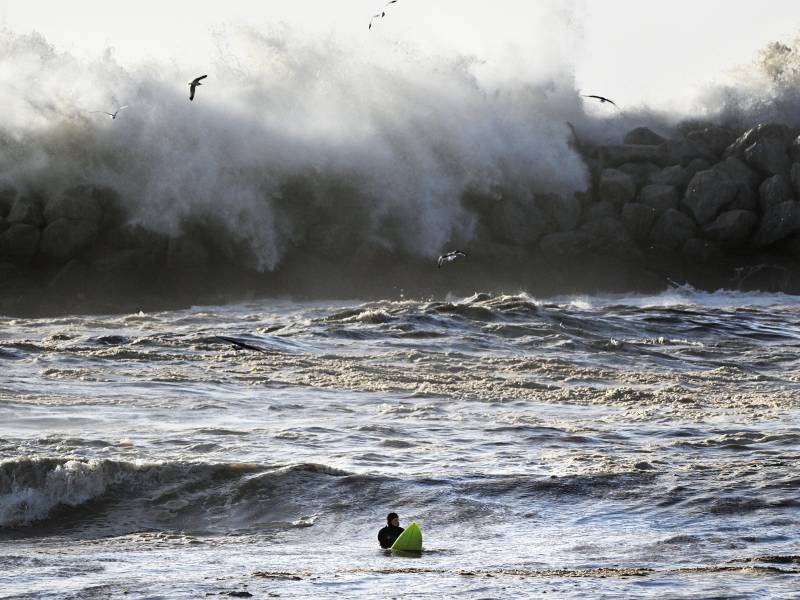Warmer ocean temperatures and inflows of freshwater from the world’s melting ice caps have caused sea levels to rise roughly 8 inches along California’s 1,200 mile coastline in the last century, according to the California Coastal Commission. Without rapid cuts in greenhouse gas emissions, they could rise by feet in the coming decades.
By the turn of this century, federal estimates warn nearly three-quarters of California’s picturesque beaches may be completely eroded (PDF) by rising seas. A report by California’s nonpartisan Legislative Analyst’s Office found that between $8 and $10 billion worth of existing property is likely to be underwater within the next few decades, with an additional $6 to $10 billion worth of property at risk during high tides.
“Higher waves with higher sea levels allows more wave energy to reach vulnerable sea cliffs and also enhances coastal flooding as well as damage to coastal infrastructure,” said Bromirski.
The new study adds to a growing body of research that suggests storm activity in the Northern Pacific Ocean — the main source of California’s winter swells — has increased as human activities have caused the world’s temperature to warm. A 2019 study by researchers at the University of California, Santa Cruz, found that the energy in ocean waves have increased over most of the last century because of climate change.
Another study, published by a team of international researchers in 2021, found that climate change is causing wave power — the energy transferred from winds to waves — to increase globally, particularly in the Southern Hemisphere.
“The areas where we see the most warming in the global oceans is where we tend to see the most significant increases in wave power,” said Tom Mortlock, one of the study’s authors and an Australian-based senior analyst at the insurer Aon. “The reason for this is that as oceans warm, they intensify the circulation of winds over the ocean, and stronger winds drive higher waves.”

9(MDAxOTAwOTE4MDEyMTkxMDAzNjczZDljZA004))
